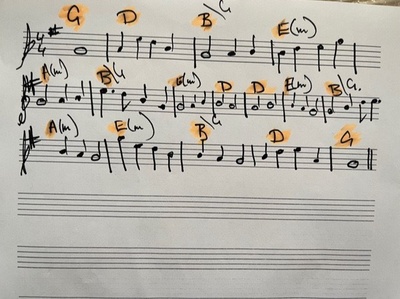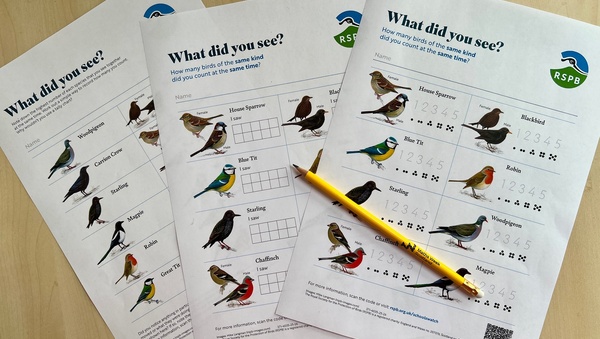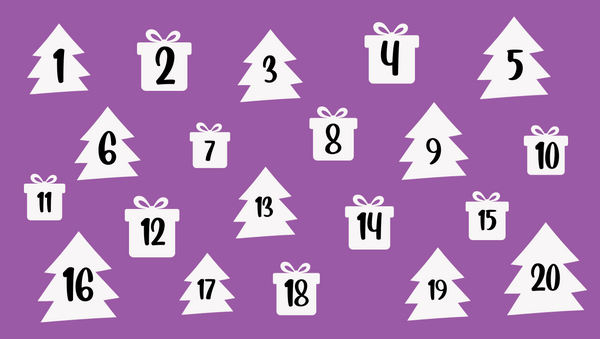Looking and Listening for the Beauty in Maths
A series of videos focused on the mathematics in Art and Music, created by the Scottish Mathematical Council for Maths Week Scotland 2022.

Welcome to ‘Looking and Listening for the Beauty in Maths’, a series of videos focused on the mathematics in Art and Music, and created by the Scottish Mathematical Council for Maths Week Scotland 2022.
Scroll down the page of information to see the learning activities for each day of Maths Week Scotland. Each video is accompanied by a brief description, any web-links referred to in the video and a list of key vocabulary to support planning and preparation. Most suitable for upper primary/ early secondary.
Have fun!
Video 1: Monday
This video has a musical theme and focuses on rhythm. Cameron Orr gets things started by asking, “What is a palindrome?” He then takes pupils through a fun activity which highlights the patterns in Music. Alan Walker explains how mathematics helps a drummer to ‘keep the beat’ before the video returns to Cameron, who demonstrates how to create a Percussive Palindrome and encourages pupils to create and share their own Percussive Palindromes.
Key vocabulary: rhythm, pattern, palindrome, percussion, measure, beats in a bar, grid, symbol
Web-link: Symphony No. 47 by Joseph Haydn
Video 2: Tuesday
This video has an artistic theme. Karen Hart begins by challenging pupils to find examples of tiling and tessellation in their environment. Pupils are introduced to the work of the Dutch graphic artist, M. C. Escher, then invited to create their own picture in the style of Escher.
Key vocabulary: tile, tiling, tessellate, tessellation, regular, irregular, square, rectangle, opposite, position
Web link: M. C. Escher Tessellation Art Gallery
Video 3: Wednesday
Cameron and Alan return with a musical themed video focused on the Pentatonic Scale. Alan begins by reminding pupils of the seven major notes in music (C, D, E, F, G, A, B) and explains the term Modular Arithmetic. He goes on to introduce the Pentatonic Scale (F♯, G♯, A♯, C♯, D♯ - ‘the black keys’) before being joined by Cameron to create a piece which pupils are invited to play along with.
Challenge pupils to justify why Alan plays 8 notes when discussing the scale of C major, and 6 notes when demonstrating the pentatonic scale. Can the pupils keep the beat in time to Alan and Cameron’s tune? Can they create their own piece of music using the pentatonic scale?
Key vocabulary: pentatonic scale, pentagon, frequency, octave, beat
Video 4: Thursday
Karen returns with another art themed video focused on the work of Piet Mondrian, a Dutch artist best known for his abstract work. She begins by challenging pupils to create an image using only horizontal and vertical lines before demonstrating how to create a picture in the style of Mondrian. Karen finishes by challenging pupils to consider what an image using only horizontal and vertical lines, that are neither parallel nor perpendicular, might look like.
Key vocabulary: primary colours, abstract, horizontal, vertical, parallel, perpendicular, ninety-degree angles, right angles, rectangle, square
Web link: Who is Piet Mondrian?
Video 5: Friday
This video combines the previous two music themed videos. Cameron is joined by fellow Scottish Mathematical Council Member, Alan Taylor, and together they create a Pentatonic Palindrome! Several follow up suggestions are offered:
- have a go at playing Alan & Cameron’s pentatonic palindrome (see sheet music below)
- create your own pentatonic palindrome
- write a song to help you remember something in maths
- write a song about what you like about maths

We would love to see and hear your creations so please do share them with us on Twitter with the hashtag #MathsWeekScot, tagging in @scottishmaths and @mathsweekscot.
Latest News and Events

RSPB Big Schools' Birdwatch
It is almost time for the RSPB Big Schools’ Bird Watch – the largest citizen science project for schools across the UK. Sign up to take part, from 6th January- 13th February 2026.

Pick & Mix Your Own Christmas Holiday Countdown
We've pulled together all our seasonal resources from the last three years, and thrown in a few new ones too, so that you can create your own Christmas Holiday Countdown depending on age, ability and preferences. With games, puzzles, art and craft activities to choose from, as well as our interactive puzzle mystery story.
